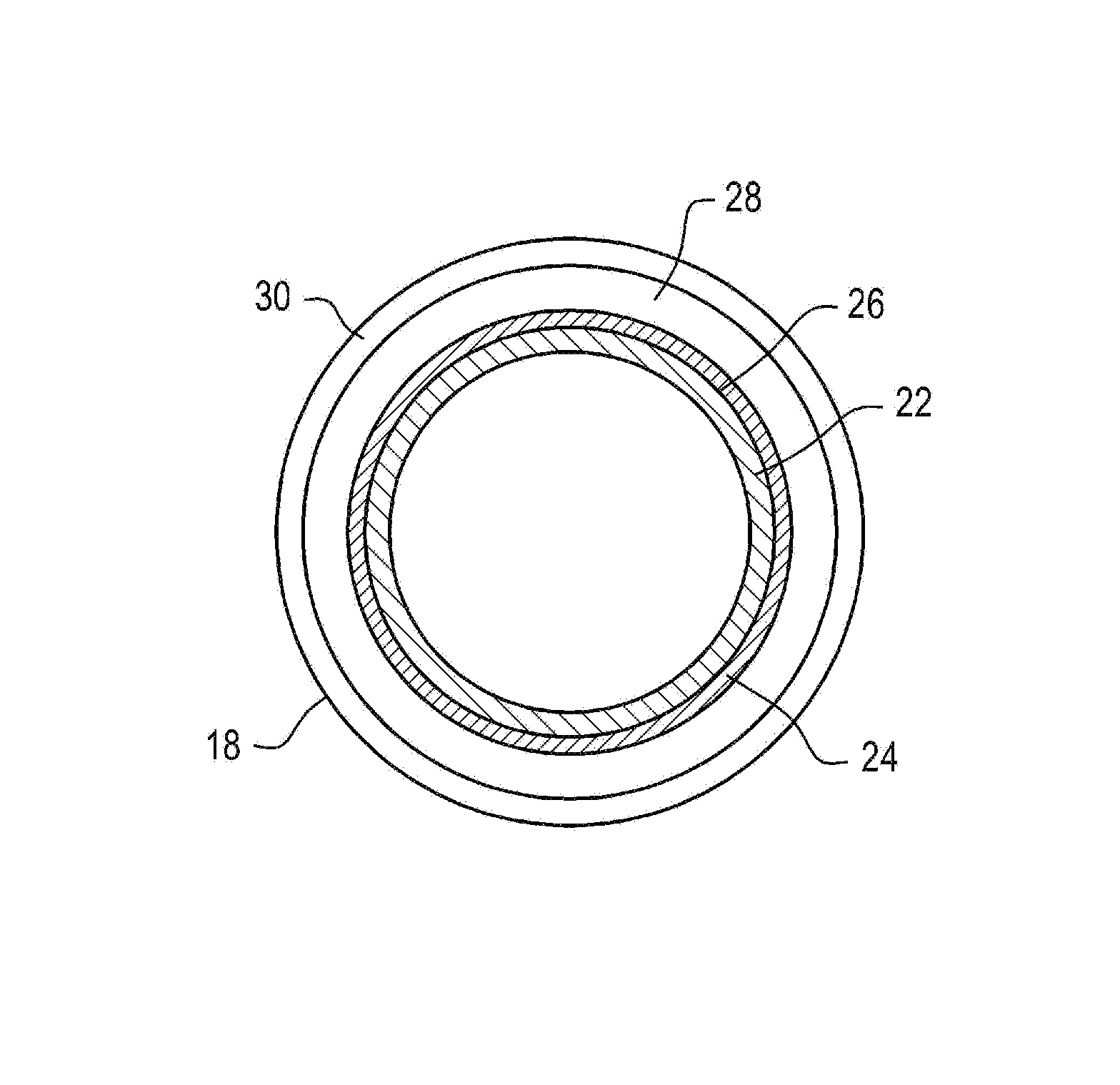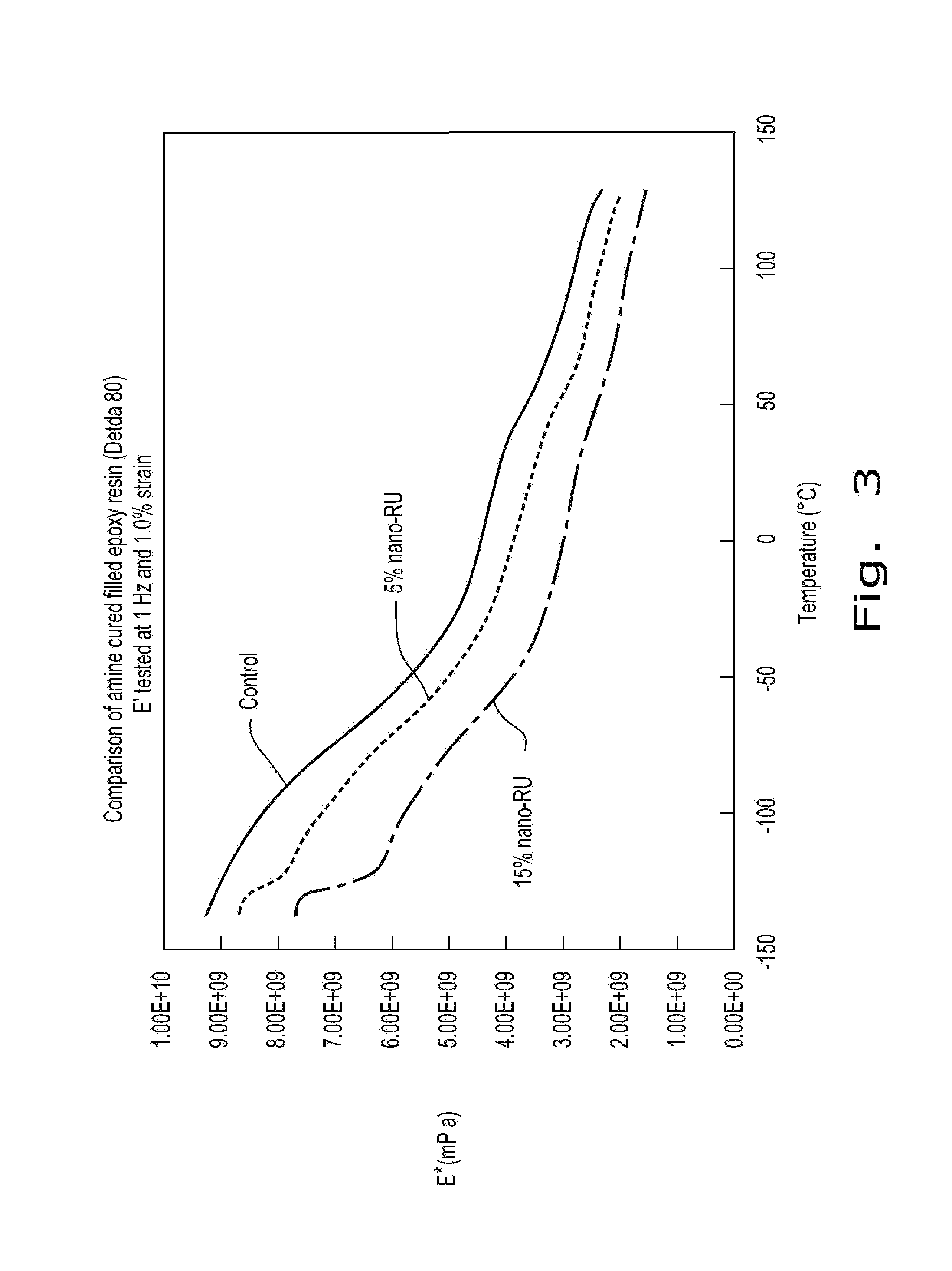Roll for a papermaking machine
a papermaking machine and roll technology, applied in the field of roll or roll cover for use in papermaking machines, can solve the problems of dramatic drop in the temperature at which the cover can effectively operate, dramatic reduction in the impact strength of the cover, and other crucial nip mechanisms, so as to improve the marking resistance, improve the surface quality, and increase the toughness
- Summary
- Abstract
- Description
- Claims
- Application Information
AI Technical Summary
Benefits of technology
Problems solved by technology
Method used
Image
Examples
Embodiment Construction
[0024]According to an aspect of the present invention, a predefined amount of a chemically reactive elastomer nano-modifer is added to, for example, a thermo-set resin matrix to form a composite. The chemically reactive elastomer nano-modifer reacts only with side chain-functional groups of the resin matrix, thus modifying the secondary cross-linking configurations of the thermo-set resin matrix without affecting the thermo-set resin's main-chain mobility in the crankshaft frequency range. Accordingly, the Young's modulus of the thermo-set resin may be modified without affecting the glassy transition temperature. The composite is used according to the present invention to form an outer circumferential surface of a roll, for example a calender roll, or a roll cover for a roll for use in a papermaking machine.
[0025]Referring now to the drawings, and more particularly to FIG. 1, there is shown a schematic representation of chemically reactive elastomer nano-particle 10, for example a s...
PUM
| Property | Measurement | Unit |
|---|---|---|
| particle size | aaaaa | aaaaa |
| particle size | aaaaa | aaaaa |
| particle size | aaaaa | aaaaa |
Abstract
Description
Claims
Application Information
 Login to View More
Login to View More - R&D
- Intellectual Property
- Life Sciences
- Materials
- Tech Scout
- Unparalleled Data Quality
- Higher Quality Content
- 60% Fewer Hallucinations
Browse by: Latest US Patents, China's latest patents, Technical Efficacy Thesaurus, Application Domain, Technology Topic, Popular Technical Reports.
© 2025 PatSnap. All rights reserved.Legal|Privacy policy|Modern Slavery Act Transparency Statement|Sitemap|About US| Contact US: help@patsnap.com



